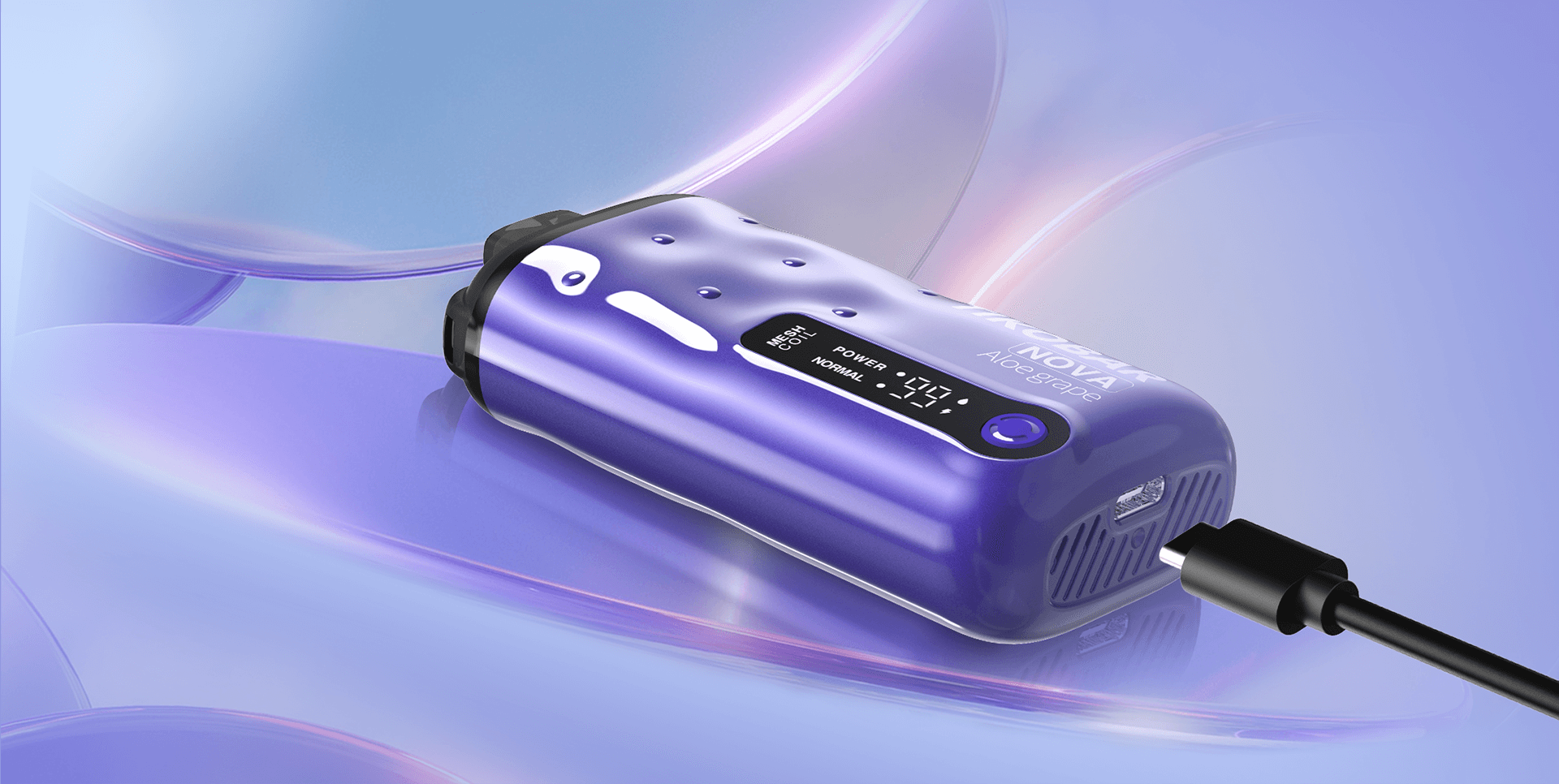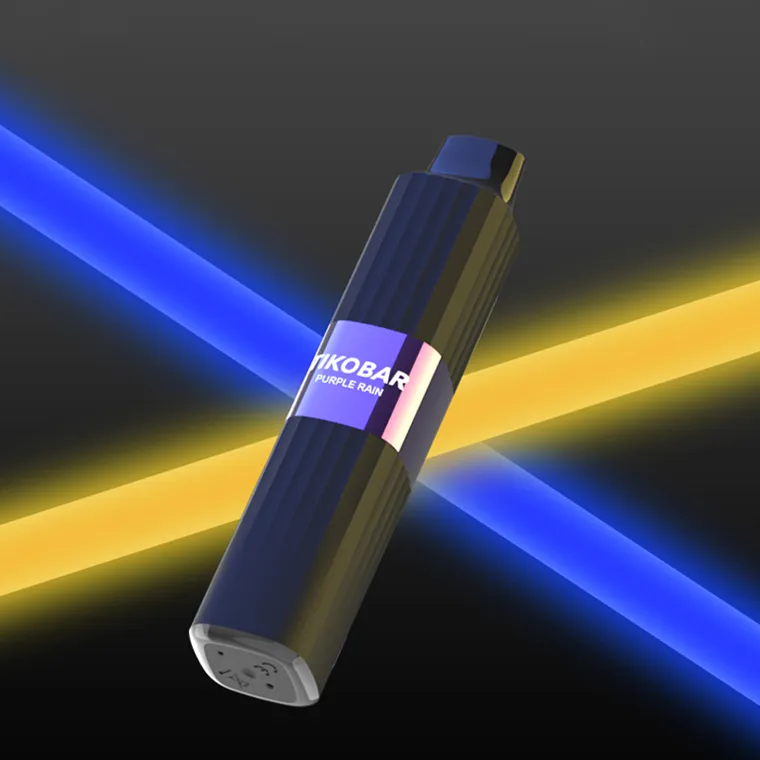Introduction
Nicotine addiction is a formidable challenge, and for those seeking a way out, Nicotine Replacement Therapy (NRT) has long been a vital lifeline. However, the landscape of NRT is evolving, and a new contender has emerged – Disposable Rechargeable Vapes. In this article, we delve into the potential of these innovative devices to transform NRT programs.
But first, let’s understand the context of NRT.

Understanding NRT Programs
Nicotine Replacement Therapy (NRT) is a proven strategy for helping smokers quit their habit. Traditionally, NRT has included nicotine patches, gum, and lozenges. While effective for some, these methods have limitations that can deter many individuals from attempting a successful quit.
Disposable Rechargeable Vapes are poised to address these limitations by offering a more flexible and user-friendly approach to nicotine replacement. How exactly do they work? Let’s explore further.
Disposable Rechargeable Vapes: What Are They?
Disposable Rechargeable Vapes, often known simply as “disposable vapes,” represent a modern evolution in vaping technology. These devices are designed to provide users with a controlled dose of nicotine without the harmful byproducts of traditional smoking. Here’s a closer look at what sets them apart:
- Variety of Types: Disposable Rechargeable Vapes come in various forms, including pens, pods, and more. Each type caters to different preferences and usage patterns, allowing users to find the style that suits them best.
- Nicotine Delivery: These vapes operate by heating a nicotine-containing liquid, which is then inhaled as a vapor. Unlike cigarettes, which burn tobacco and produce harmful tar and toxins, disposable vapes offer a cleaner nicotine delivery method.
- Customizable Nicotine Levels: One of the critical advantages of Disposable Rechargeable Vapes is the ability to customize nicotine levels. Users can select from a range of nicotine concentrations, making it possible to gradually reduce nicotine intake and ease withdrawal symptoms during their journey to quit smoking.
- Portability and Convenience: These devices are compact and easy to carry, making them convenient for on-the-go use. This portability ensures that users can access their nicotine replacement whenever and wherever they need it.
- Disposability and Rechargeability: The term “disposable rechargeable” may sound contradictory, but it accurately describes the nature of these vapes. Some models are entirely disposable, while others can be recharged and reused. This flexibility caters to different user preferences and sustainability concerns.
Benefits of Disposable Rechargeable Vapes in NRT
The integration of Disposable Rechargeable Vapes into NRT programs can offer several significant advantages:
- Reduced Harm Potential: Compared to traditional smoking, using Disposable Rechargeable Vapes substantially minimizes the harm caused by inhaling toxic substances in cigarette smoke. This harm reduction approach aligns with the core principles of NRT programs, which aim to help smokers quit while minimizing health risks.
- Customizable Nicotine Levels for Gradual Withdrawal: NRT programs often involve a step-down approach to nicotine intake. Disposable Rechargeable Vapes excel in this regard, as users can choose from various nicotine strengths, allowing them to decrease their nicotine consumption over time. This controlled tapering can enhance the chances of quitting successfully.
- Portability and Convenience for Users: The compact and user-friendly design of Disposable Rechargeable Vapes ensures that individuals participating in NRT programs can readily access their nicotine replacement therapy. This accessibility can be a game-changer for those moments when cravings strike unexpectedly.
- Potential Cost-Effectiveness Over Time: While the upfront cost of purchasing Disposable Rechargeable Vapes may vary, the potential for long-term cost savings compared to buying traditional cigarettes is noteworthy. Users may find that investing in these devices is a financially savvy choice in the context of NRT.
By combining the benefits of nicotine replacement with the convenience and harm reduction potential of Disposable Rechargeable Vapes, individuals attempting to quit smoking may find a more effective and satisfying path to success.
Safety Concerns and Regulation
As with any emerging technology, addressing safety concerns and navigating the regulatory landscape is crucial. Disposable Rechargeable Vapes are no exception. Here’s a closer look at the safety considerations and regulations associated with these devices:
Addressing Safety Concerns:
- Quality Control: Users should prioritize products from reputable disposable vape manufacturers like “Tikobar Vape” to ensure the quality and safety of their devices. Reliable manufacturers adhere to industry standards and conduct rigorous testing to guarantee product safety.
- Battery Safety: Some Disposable Rechargeable Vapes come with rechargeable batteries. Users should follow manufacturer guidelines for battery care to prevent overheating or malfunction.
- Avoiding Counterfeits: The popularity of these devices has given rise to counterfeit products. Users should exercise caution when purchasing and verify the product’s authenticity to prevent potential safety hazards.
Regulations and Age Restrictions:
- Age Restrictions: It’s important to emphasize that these devices are intended for adult smokers seeking an alternative to traditional cigarettes. Many countries and regions have age restrictions in place to prevent underage access.
- Product Labeling: Disposable Rechargeable Vapes must comply with labeling requirements, providing clear information about nicotine content, warnings, and usage instructions. Users should always read and follow these labels.
- Local Regulations: Regulations regarding the sale, marketing, and use of Disposable Rechargeable Vapes can vary by location. Users should be aware of and comply with local laws and ordinances.
- Advocacy and Awareness: Advocacy groups and public health organizations play a crucial role in monitoring the safety and regulation of these devices. Staying informed about developments in the industry can help users make responsible choices.
Incorporating safety guidelines and adhering to regulations ensures that Disposable Rechargeable Vapes are used responsibly and effectively in NRT programs. However, comparing these devices with other NRT methods is essential to make informed choices.
Disposable Rechargeable Vapes vs. Other NRT Methods
To determine the effectiveness of Disposable Rechargeable Vapes in NRT programs, it’s essential to compare them to traditional NRT methods like nicotine patches, gum, and lozenges. Here’s a comparative analysis:
Pros of Disposable Rechargeable Vapes:
- Faster Nicotine Delivery: Unlike patches that release nicotine slowly over time, disposable vapes provide a quick nicotine hit, similar to the sensation of smoking a cigarette. This can be more satisfying for users dealing with cravings.
- Customizable Nicotine Levels: Disposable Rechargeable Vapes offer a broader range of nicotine concentrations than traditional NRT products. This flexibility allows users to tailor their nicotine intake to their needs during the quitting process.
- Psychological Satisfaction: The hand-to-mouth action and vapor production of disposable vapes mimic the behavioral aspects of smoking, which can be psychologically comforting for those trying to quit.
Cons of Disposable Rechargeable Vapes:
- Potential for Abuse: The rapid nicotine delivery of disposable vapes may increase the risk of misuse, especially among individuals who haven’t previously used nicotine replacement products.
- Battery and Device Maintenance: Rechargeable models require users to manage batteries and charging, adding an extra layer of responsibility compared to simple patch applications.
Pros of Traditional NRT Methods:
- Gradual Nicotine Release: Nicotine patches, gum, and lozenges provide a steady, controlled release of nicotine, reducing the risk of overconsumption and nicotine dependence.
- Minimal Maintenance: Traditional NRT methods are straightforward and require little maintenance, making them suitable for individuals with busy lifestyles.
Cons of Traditional NRT Methods:
- Slower Nicotine Delivery: The gradual release may not provide the immediate relief from cravings that smokers often seek.
- Lack of Behavioral Replication: Traditional NRT methods do not mimic the hand-to-mouth action and sensory experience of smoking, which some users find less satisfying.
Choosing between Disposable Rechargeable Vapes and traditional NRT methods depends on individual preferences and needs. Combining these methods under healthcare professionals’ guidance can also be a strategy to maximize effectiveness.
Success Stories and Testimonials
The effectiveness of Disposable Rechargeable Vapes in NRT programs can be best illustrated through the real-life stories of individuals who have successfully used these devices to quit smoking. Here are some inspiring testimonials:
John’s Journey to Quitting:
John, a longtime smoker, struggled for years to break free from the grasp of nicotine addiction. He tried various traditional NRT methods but found them insufficient to combat his cravings. Only when he switched to Disposable Rechargeable Vapes did he experience a breakthrough. The ability to choose his nicotine level allowed him to reduce his intake gradually, and the sensation of vaping provided the satisfaction he missed from smoking. Today, John is smoke-free and credits Disposable Rechargeable Vapes for his success.
Emily’s Experience:
Emily had been a pack-a-day smoker for over a decade. She had attempted to quit multiple times but always relapsed due to intense cravings. When she discovered Disposable Rechargeable Vapes, she was initially skeptical but decided to try them. The flexibility to adjust nicotine levels helped her manage withdrawal symptoms effectively. Over time, Emily decreased her nicotine intake until she no longer needed it. She proudly shares her smoke-free journey and how these devices played a pivotal role.
These stories demonstrate the potential of Disposable Rechargeable Vapes to empower individuals to quit smoking. While success may vary from person to person, these devices have provided a valuable tool for many.
Expert Opinions
To gain a deeper understanding of the impact of Disposable Rechargeable Vapes on NRT programs, we sought insights from experts in the field of smoking cessation:
Dr. Sarah Lawson, Smoking Cessation Specialist:
“Disposable Rechargeable Vapes offer a promising addition to NRT programs. Their ability to deliver nicotine that closely mimics smoking behavior can make the transition to a smoke-free life more manageable for many. However, users must approach these devices responsibly, seeking guidance from healthcare professionals when needed.”
Dr. Mark Turner, Public Health Advocate:
“While Disposable Rechargeable Vapes have shown potential in helping smokers quit, we must also emphasize the importance of comprehensive tobacco control efforts. These devices should be considered part of a broader strategy to reduce smoking rates, along with public health policies and education.”
Incorporating the perspectives of experts and real-life success stories highlights the evolving landscape of NRT programs and the role that Disposable Rechargeable Vapes can play in supporting smokers on their journey to quit.
Addressing Common Concerns and Misconceptions
As with any emerging technology, Disposable Rechargeable Vapes have faced their share of concerns and misconceptions. It’s crucial to provide evidence-based information to address these doubts and promote responsible usage:
1. Misconception: Disposable Rechargeable Vapes Are Just as Harmful as Cigarettes.
- Reality: While not entirely risk-free, Disposable Rechargeable Vapes produce vapor, not smoke. This vapor is significantly less harmful than the toxic compounds found in cigarette smoke. Numerous studies have shown that switching from smoking to vaping can substantially improve health.
2. Concern: Disposable Vapes May Encourage Non-Smokers, Including Youth, to Start Vaping.
- Reality: Regulations and age restrictions are in place to prevent underage access to these devices. Responsible marketing and strict adherence to these regulations by manufacturers can mitigate this concern. Additionally, the primary target audience for Disposable Rechargeable Vapes is adult smokers seeking an alternative.
3. Misconception: Disposable Vapes Are a Gateway to Smoking.
- Reality: The gateway theory has been widely debunked by research. Most Disposable Rechargeable Vape users are current or former smokers looking for a less harmful alternative. Limited evidence suggests that non-smokers who try vaping subsequently become regular smokers.
4. Concern: Disposable Rechargeable Vapes Lack Long-Term Studies on Safety.
- Reality: While it’s true that long-term studies are ongoing, the short-term evidence consistently indicates that vaping is less harmful than smoking. Current research supports the view that vaping can be a valuable tool for smoking cessation.
By addressing these concerns and misconceptions with accurate information, users can make informed decisions about incorporating Disposable Rechargeable Vapes into their NRT programs. It’s important to stress the need for responsible use and consultation with healthcare professionals when considering any NRT method.
In conclusion, Disposable Rechargeable Vapes have the potential to revolutionize Nicotine Replacement Therapy (NRT) programs by offering a flexible, customizable, and satisfying alternative to traditional smoking. Their role in NRT programs should be considered part of a comprehensive strategy to reduce smoking rates and improve public health. Users need to prioritize safety, follow regulations, and seek expert guidance when beginning to quit smoking.
Conclusion
Disposable Rechargeable Vapes have emerged as a promising innovation within Nicotine Replacement Therapy (NRT) programs in the quest to overcome nicotine addiction and promote a healthier, smoke-free lifestyle. Their unique flexibility, customizable nicotine levels, and user satisfaction set them apart from traditional NRT methods. As we conclude our exploration of these devices, several key takeaways become evident:
- Harm Reduction: Disposable Rechargeable Vapes offer a substantially less harmful alternative to smoking, allowing users to satisfy their nicotine cravings without the detrimental health effects of traditional tobacco products.
- Customization: The ability to select from a range of nicotine concentrations empowers users to tailor their nicotine replacement therapy to their needs, supporting gradual withdrawal from nicotine addiction.
- Portability and Convenience: These devices ensure that NRT is readily accessible, promoting consistency in users’ smoke-free journeys.
- Safety and Responsibility: Addressing safety concerns, adhering to regulations, and seeking expert guidance are essential for users to maximize the benefits of Disposable Rechargeable Vapes while minimizing risks.
- Evidence-Based Approach: Current research and expert opinions support the view that Disposable Rechargeable Vapes can play a significant role in smoking cessation and harm reduction.
As with any NRT method, the choice to incorporate Disposable Rechargeable Vapes into your quit-smoking journey should be made in consultation with healthcare professionals. The synergy between these devices and comprehensive tobacco control efforts, including public health policies and education, can lead to more successful quitting outcomes.
The landscape of Nicotine Replacement Therapy is evolving, and Disposable Rechargeable Vapes are at the forefront of this transformation. By embracing innovation, adhering to safety guidelines, and making informed choices, smokers can look forward to a future free from the harmful effects of tobacco smoke.








